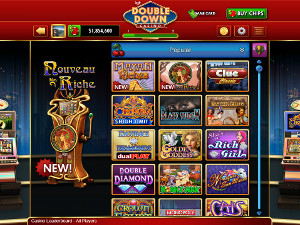Black Jack Card Values
The card values in blackjack were shown in our rules section to be as follows:
Card Values in BlackJack Java. Ask Question Asked 6 years, 6 months ago. Active 6 years, 6 months ago. Viewed 3k times 0. First time posting on here. I've heard many good things about the community. I'm an amateur programmer and have dabbled in C and Java so far. Anywhoo, I've been cracking my head open with this BlackJack game in java I've. Blackjack, formerly also Black Jack and Vingt-Un, is the American member of a global family of banking games known as Twenty-One, whose relatives include the British game of Pontoon and the European game, Vingt-et-Un. It is a comparing card game between one or more players and a dealer, where each player in turn competes against the dealer. Players do not compete against.
- 2, 3, 4, 5, 6, 7, 8, 9, 10 for corresponding number cards
- 10 for face cards
- 1 or 11 for ace as suits the player
So for example, a hand consisting of (Kd,2c,6h) has the value of 10 + 2 + 6 = 18. As you can see, the suit is irrelevant to the value of the cards. The value of an ace in any hand is automatically determined to give the best score to the hand. For example, in the hand (As, 8c) the Ace takes the value of 11, raising the score to 19 instead of 9. In the hand (As, 8c, Td) the ace has a value of 1, so that the score adds up to 19 instead of 29, which would be over 21. Hands were the Ace can either have the value 1 or 11 are called “soft hands”, because players can always hit a card (ask for another card) without the risk of going bust.
What These Card Values Mean in the Game
The cards in blackjack can all go both ways, depending on your hand and what the dealer is showing. However, due to the rules binding the dealer’s actions, their significance is not the same for the player as for the dealer. Ten-value cards, for instance, are valuable to the dealer, but even more valuable to the player. Here you can read more about the importance of each set of cards.
The Ace
The ace is a card that can go both ways. If dealt to the dealer it represents a strong likelihood that he will not bust, and you will need to risk much to make a pat hand (a hand between 17 and 21) or, when possible, surrender to save what can be saved of your bet. However, the ace is even more profitable to the player than it is to the dealer. If the first card you are dealt is an ace you have just been dealt a 52% edge over the house for that hand.
2 and 3
These are ambiguous cards. If the dealer is showing a 2 or a 3, then on the whole that is good news for the player. Seeing a dealer show a 2 or 3 as their face-up card may give you a boost of confidence in your own hand. However, you should be aware that these cards can also save the dealer from a likely bust when there are many of them in the deck. It doesn’t ensure a win.

Blackjack Card Value Chart
4, 5, and 6
When the dealer is showing one of these cards chances are high that he will bust, and the player can play more conservatively and stand on lower totals because of this. Two of these cards dealt to a player result in a total low enough to result in a pat hand after hitting, but on their own one of these cards can really ruin your hand.

Poker Card Values Chart
7,8, and 9
These neutral cards are often neglected by many card counting systems. They are important in relation to holding a hand with a total value of 12 or 13, but often simply playing basic strategy in these cases instead of counting 7s, 8s and 9s will save the more-than-casual player a headache over what is a low overall value for a big additional effort.
Blackjack Face Card Values
10 Value Cards
Ten value cards are the most important cards in the deck to the player, simply because there are so many of them. Edward Thorp‘s Ten Count was the first valuable card count designed for multi-deck blackjack and forms the basis for every other good card counting system. This is because the ten value cards are valuable to the dealer, but they are more valuable still to the player. While the dealer must always hit a stiff (a hand between 12 and 16) and risk busting, many tens in the deck allow the player to stand on stiffs when the dealer hand is weak.